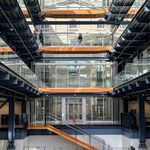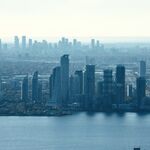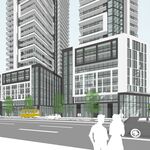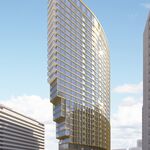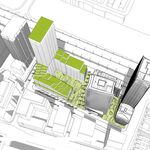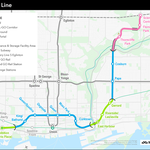April 8, 1956 was the last day a streetcar ran on Woodward Ave in Detroit, Michigan. The city had a population of 1.8 million in 1950, and at one point had the second largest streetcar system in the United States, with 700 cars in service daily running to all parts of the city. It was shortly afterwards that the city began its decline, and many attribute that decline in no small part to the removal of the streetcar system. In 2015, Detroit had a population of just 677,116, with another 5,000 estimated to have left in 2016.
As a follow-up to yesterday's article about Toronto's woes of getting new streetcars on the road, we thought we'd shine a spotlight on a streetcar success story from a place that has become the poster child (for better or for worse) for the domination of the automobile: Detroit. This article is based upon the photos and thoughts of UrbanToronto Forum contributor 'drum118'.
 The QLine in Downtown Detroit, image by UT Forum contributor drum118
The QLine in Downtown Detroit, image by UT Forum contributor drum118
61 years later on May 12, 2017, the QLine, owned and operated by M-1 Rail—a consortium of private and public businesses and institutions in the region—opened a new 3.3-mile streetcar line at a cost of about $200 million along Woodward Avenue, effectively Detroit's main street. The line runs from Congress Street in Downtown Detroit to Grand Boulevard to the north. The original plan called for a northern terminus another 5 miles north at 8 Mile Road, but that segment was cancelled due to lack of funds. The official opening took place in the heart of Downtown at Grand Circus Park with the Mayor of Detroit, the Governor of Michigan, and other VIP guests in attendance. Following the ceremony, the official party rode LRV 288 to Congress Street Station.
 A route map of the Q-Line, image via Curbed Detroit
A route map of the Q-Line, image via Curbed Detroit
The QLine Liberty Light Rail Vehicles (LRVs) were built by Brockville Equipment Corp. They have a capacity of 114 (including the operator), are bidirectional, and the 3-section cars are 66 feet long. The centre section is low floor for about 71% of the car, and it has 4 designated spots for wheelchairs, with bumper pads on the wall for riders to lean against if the spot is not occupied by a wheelchair. Being bidirectional, both ends have a driver compartment, which is substantially smaller than other LRVs. The compartments do have with a window in the door that can be opened, so people can look over the shoulder of the operator, as well as ask them questions. The two ends of the LRV are high floor with only 17 seats. This means there are only 34-38 seats on the LRV, depending what is taking place in the centre section. Currently the system has 6 LRVs, but only 5 are in service at any given time with the other acting as a spare. They are numbered 288 through 292, a continuation of the numbering scheme that ended with streetcar 287 in 1956.
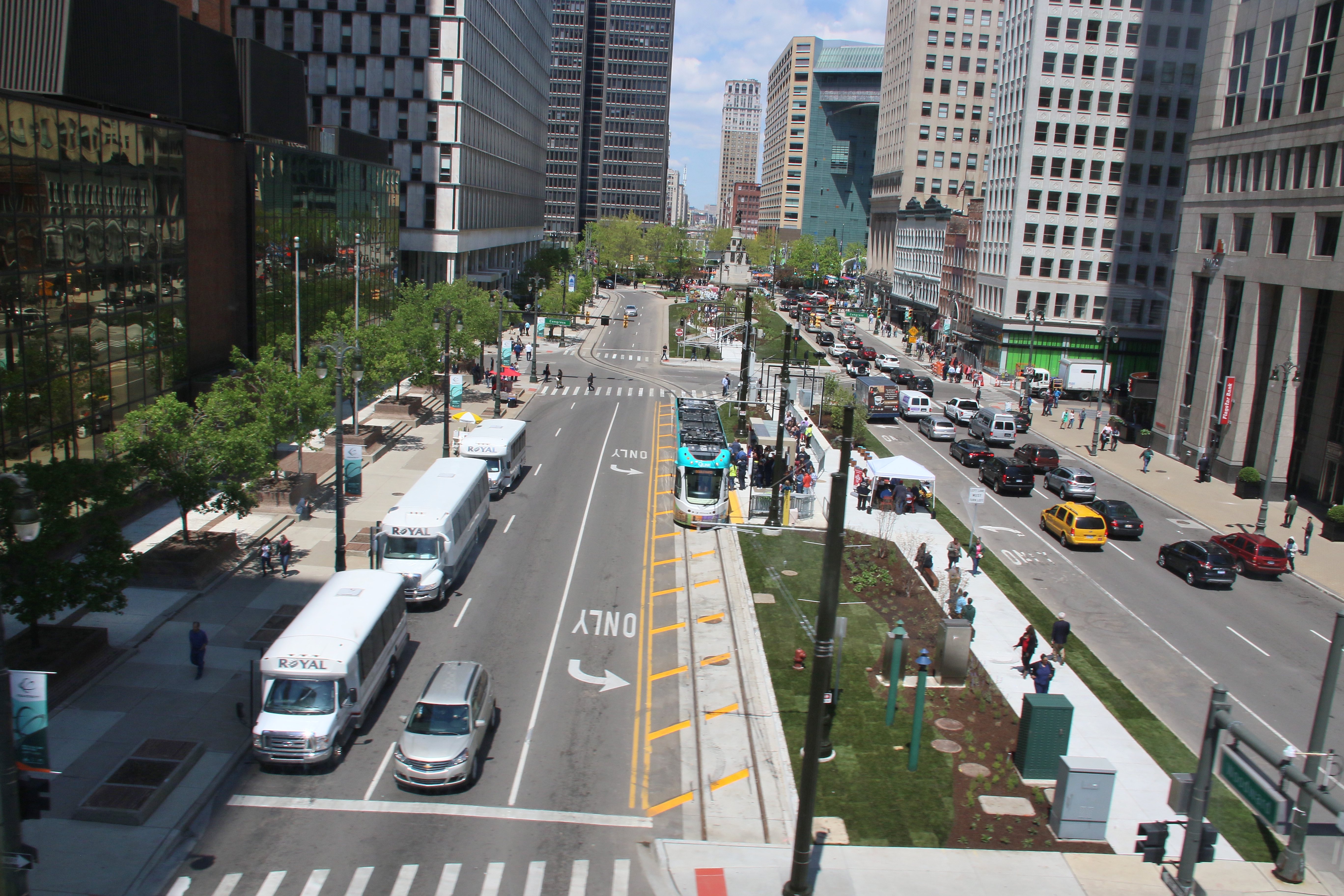 Congress Street Station in Downtown Detroit, image by UT Forum contributor drum118
Congress Street Station in Downtown Detroit, image by UT Forum contributor drum118
Only 35% of the QLine, between I-94 and I-75, has overhead wiring for pantograph. The rest of the line requires the new streetcars to run on 750V lithium batteries that are required to be charge at various stations up to 5 minutes. This charging requirement adds dwell time at various stations along the line, including terminus points.
 Last-minute work being done the night before the QLine opening, image by UT Forum contributor drum118
Last-minute work being done the night before the QLine opening, image by UT Forum contributor drum118
At the Congress Street Station, the southern terminus, the LRVs use the centre lane that is protected from traffic and part of a mall walkway that was still being finished off the night before opening. This mall requires the LRV to cross all lanes of traffic to get from/to the curb lanes. While dwelling at this station, the LRV will recharge to prepare for its northbound trip.
All of the stations on the line are of the same design, with the only variations being how they connect to the surrounding sidewalk. One end of the platform must have a sloping ramp to get to the centre section of the LRV. The heated shelters are an L-shape that is open with a roof. The small end has an LED screen to advise the riders what time it is, when the next LRV is due, and if there are any problems on the line. The other end has another LED screen for advertisements and other information.
After the LRV is off-loaded at the Grand Boulevard northern terminus, it proceeds north one more block to a charging station, where once the battery is recharged, the LRV returns to Grand Blvd Station to begin its trip southbound.
Unlike with many transit systems, the public has a full view of work taking place on the LRVs in the carhouse on Woodward Avenue. The windows and overhead doors, directly adjacent to the sidewalk, provide a direct line of sight to the LRVs. At nighttime, gates are placed across the overhead doors inside. The LRVs are connected to power when they are in the yard to keep the batteries fully charged.
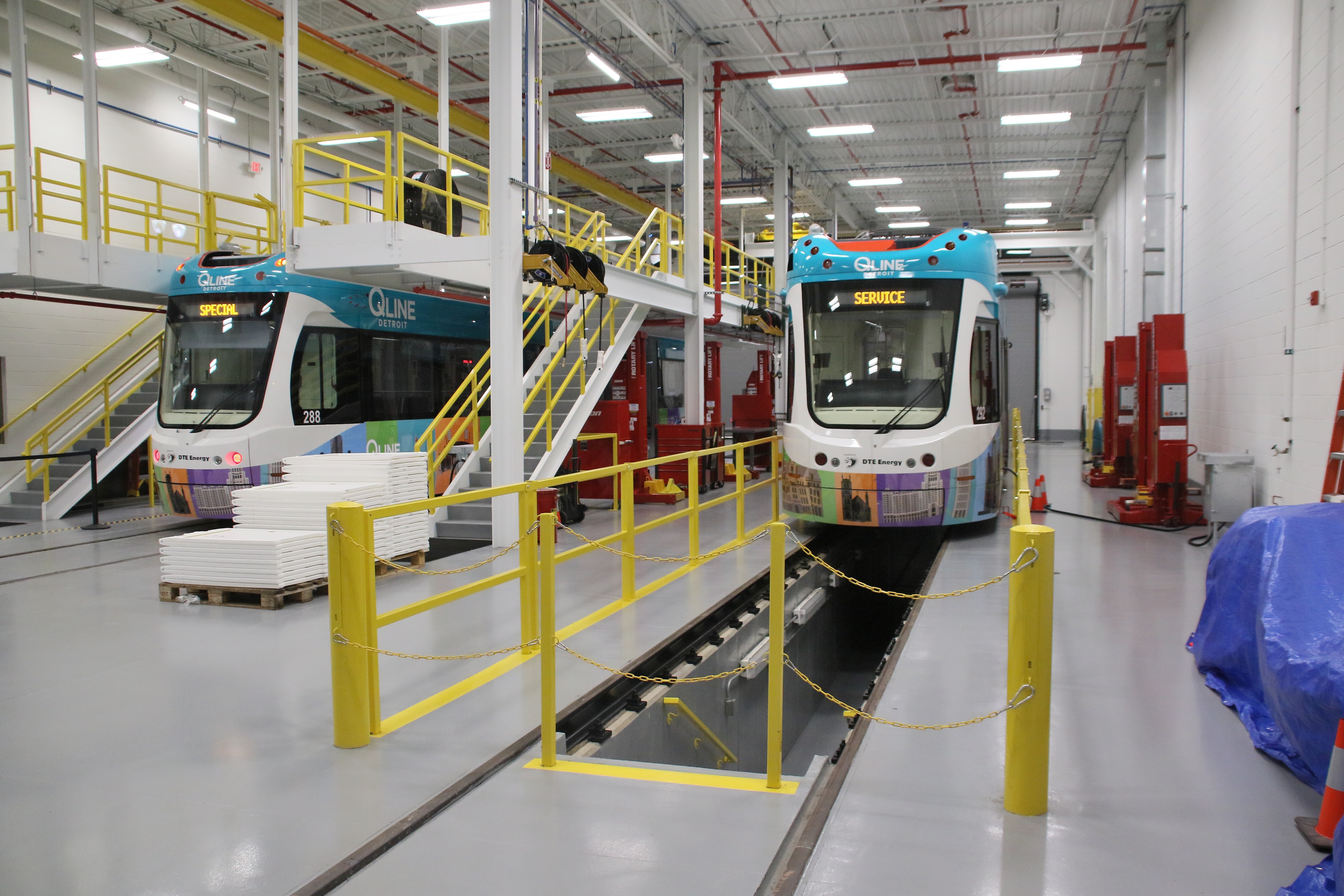 QLine LRVs 288 & 292 sitting in the Penske Center Carhouse, image by UT Forum contributor drum118
QLine LRVs 288 & 292 sitting in the Penske Center Carhouse, image by UT Forum contributor drum118
Construction of the QLine was not easy on local residents and businesses. Woodward Ave was a construction zone for several years, and at one point both I-75 and I-94 had to be closed to allow for the demolition and reconstruction of the Woodward Ave overpasses to provide the space for the new tracks in the curb lanes.
What Detroit and the residents have gotten from this construction mess is a brand new street with all new underground utilities, which have an anticipated lifespan of 50-75 years, a new concrete street that replaces the pothole-strewn asphalt street, new sidewalks in place of broken ones, new landscaping, and upscale streetlighting in place of the normal streetlight posts.
At the same time, the QLine has kick-started the redevelopment of the downtown area, and the entire corridor. While the full effects will take decades to come to fruition, signs of redevelopment are already evident.
One of Detroit’s largest strengths is its stock of beautiful early 20th century buildings, particularly downtown. Compared to many other cities, Detroit has done a great job classifying these buildings as heritage buildings, preventing developers from tearing them down in favour of new glass structures. With the opening of the QLine, some of those buildings have undergone major restorations are now open with new retail at the base, with offices or residential above.
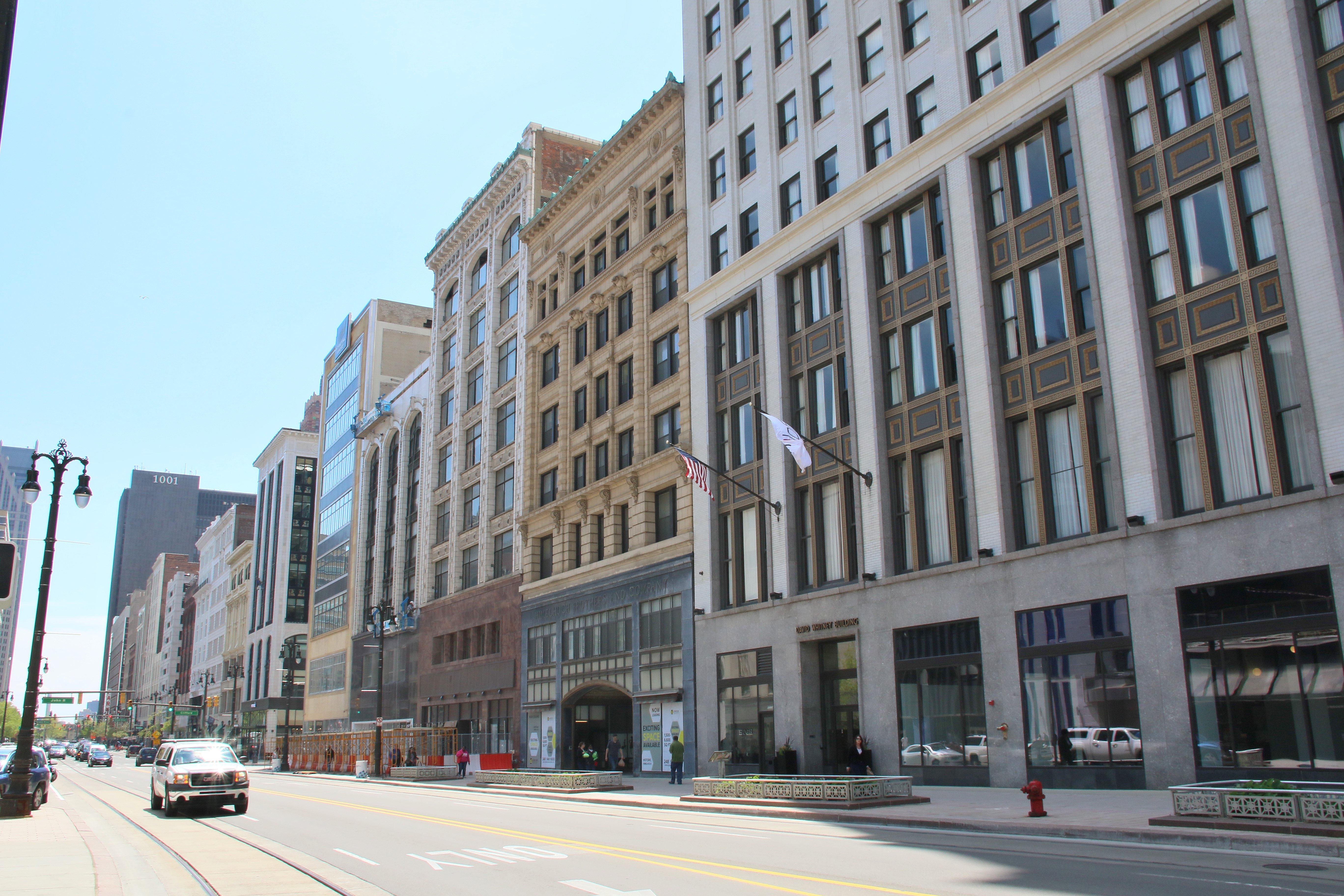 Historical buildings along the QLine corridor, image by UT Forum contributor drum118
Historical buildings along the QLine corridor, image by UT Forum contributor drum118
Just north of I-75 on Woodward Ave is the new Little Caesars Arena, scheduled to open this fall as the new home of the Detroit Red Wings. In addition to the arena, the development features office, retail and residential buildings.
 Little Caesars Arena under construction along the QLine corridor, image by UT Forum contributor drum118
Little Caesars Arena under construction along the QLine corridor, image by UT Forum contributor drum118
Not all of the corridor has seen this gentrification yet though. There are many locations along the QLine that still have rundown buildings, empty buildings, or empty lots. Even the retail areas are empty in many locations. These locations serve as a reminder that gentrification is not immediate, and will likely take decades.
Whether or not this line will generate a profit remains to be seen. It will likely take several years to generate a ridership base, and the fact that it is a separate fare from the rest of Detroit’s transit system may be a deterrent for many. Also, there is no designated Park N Ride at the Grand Blvd northern terminus, to use the line to get to/from the downtown area.
Unless the State and the City invest more money to improve transit within the city and surrounding area, the QLine can only do so much to reverse the decades-long decline of the city. It can also only do so much to convince people to use transit instead of the private auto, which Detroit has spent nearly a century restructuring its urban fabric around.

 2.9K
2.9K 












